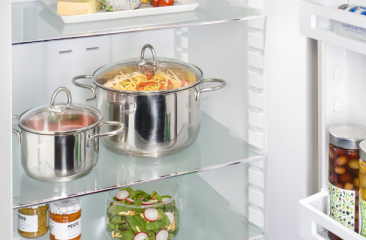Well, there are three answers to this question: yes, no and sometimes! Read our post to discover the reasons for and against doing this.

Different ideas about dealing with warm food
When it comes to the question of whether or not you can put warm food into fridge opinions differ greatly depending on where you live. In the USA, people tend to be influenced by the overriding concern that microorganisms and bacteria can easily infiltrate food and spoil it if it’s not quickly chilled in a fridge; on the other hand, in Europe, people tend to focus more on the effect that warm food has on the fridge itself – a fridge uses more energy if warm food is stored in it and so most Europeans feel that you should only put food into a fridge once it has cooled down properly.

Warm food: the facts
It’s clear that people have good reasons for these two different philosophies and, actually, these approaches aren’t totally incompatible. Without a doubt, food does spoil more quickly if it’s stored for an extended period in a warm environment, without being chilled – this is precisely why fridges were invented in the first place, i.e. to extend shelf life by quickly chilling food and storing it at a low temperature.
It’s also clear that any fridge would have to work much harder to preserve its interior ‘coldness level’ should someone place a bowl of hot soup in it! And of course, the warmer or hotter the food is, and the larger the quantity there is, the longer a fridge needs to work to restore the original temperature.
Consideration also needs to be given to the fact that other foods stored in the fridge will be exposed to higher temperatures upon the introduction of warm foods, potentially shortening their shelf life. Furthermore, hot food creates condensation inside the fridge, which settles on the rear wall causing ice formation. So, what’s the best thing to do?
Observe the following when placing warm food in a fridge
- Allow warm food to cool to room temperature first
- If possible, transfer warm food into small containers so that it cools down quicker
- If you place warm food in the fridge, store it in a container that’s sealed with a lid – this reduces condensation in the interior and hence ice formation
- A cold water bath is an effective way to cool down warm food
- Stock your fridge correctly and do not overload it to ensure good air circulation, which allows food to be optimally refrigerated
If you enjoyed this post, please share it on Facebook, Twitter or Instagram. If you have any questions, please write to us using the comment function below.